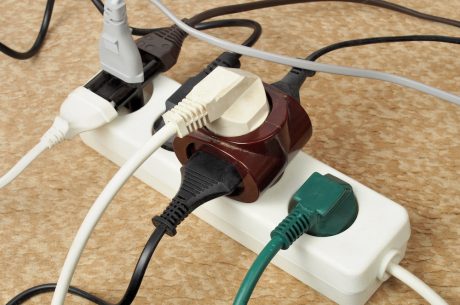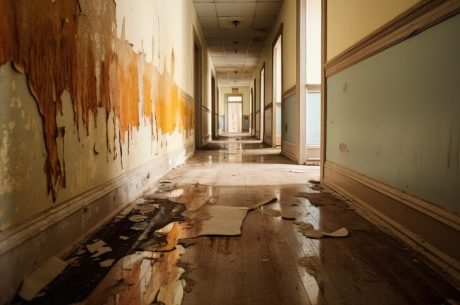Many winter storms last for days on end and can easily cause major problems for those who are not prepared. A winter storm can knock out the power and heat in your home or leave you stranded in your car. So, before a blizzard takes you by surprise, follow the winter storm safety tips below.
Winter Storm Safety Tips — Before the Storm
- Create a home emergency kit. Your winter storm safety kit should last at least three days in case of a power outage or other disaster. Include essential items like water, non-perishable foods, flashlights, a battery-operated radio, and first-aid supplies. Add winter-specific items in the kit as well: sand for traction, snow shovels, salt or sand to melt ice, heating fuel (such as dry wood if you have a fireplace) and extra clothing and blankets. Also, include a NOAA Weather Radio to listen to blizzard alerts.
- Create a disaster preparedness plan. Your winter storm safety plan will help your family know what to do during a winter storm in case you are separated: how to contact each other, how to get together and where to meet. Designate a friend or relative who lives out of town to be your family emergency contact. Also, be sure to make and practice a fire escape plan.
- Insulate your home. Install storm windows and shutters and insulate your attic and walls to keep the cold air out. Caulk and weatherstrip doors and windows or cover windows with plastic from the inside. Check and repair roof leaks and trim the trees in your yard.
- Insulate your pipes to prevent them from freezing and rupturing. Use special insulation products or even newspapers. If you’re going away, leave the heat on in your home to a temperature of at least 55° F to prevent frozen pipes. In addition, allow the faucets to drip a little to help keep them from freezing.
- Know how to shut off utilities. Should you need to evacuate your home, or if a disaster like fire or flooding occurs, you will need to shut off utilities. See our tips to shut off natural gas, electricity, and water supplies in your home.
- Maintain your heating equipment. Have your furnace, wood stove or fireplace inspected and cleaned every year to ensure they’re working properly.
- Be fire-safe. Make sure your smoke alarms and carbon monoxide alarms are working by testing them every month. Replace batteries twice a year. Have a fire extinguisher on every level of the home.
- Be ready to protect your animals. Bring companions inside and move livestock and other animals to sheltered areas.
- Winterize your car. Although driving through a blizzard is dangerous, you should be prepared for any circumstances. Install winter tires and have your vehicle prepared for severe winter Check the brakes, battery and ignition system, antifreeze levels, heater, exhaust system, and lights. Make an emergency kit for your vehicle that includes at least a flashlight, blanket, snow/ice scraper, and sand or salt. Also, keep the gas tank full to prevent the fuel line from freezing.
Winter Storm Safety Tips — During and After the Storm
It’s important to know what to do during and after a blizzard strikes your area. Having a winter storm safety mindset will help you keep yourself and your loved ones safe during inclement weather. Below, you can find information on how to remain safe during and after a winter storm:
- Drive carefully. If there is a winter storm warning in your area, take precautions immediately. Avoid driving and if you’re already driving, exercise caution. If you must travel by car, bring a disaster supplies kit.
- Don’t go outside in the storm. Yet, if it’s necessary, walk carefully on snowy or icy paths. Wear appropriate clothing: layers of lightweight clothes, water repellent outerwear, a hat, mittens, and a scarf.
- If you’re shoveling snow, avoid overexertion. Take breaks and lift smaller loads. Change wet clothes right away to prevent loss of body heat.
- Prevent frostbite. In cases of cold temperature exposure, prevent frostbite by covering exposed skin. If you think you have frostbite, do not rub the affected area. If you’ve lost feeling in extremities, such as fingers and toes, seek shelter and medical help.
- Prevent hypothermia. This is another danger when exposed to low temperatures. Symptoms include drowsiness, shivering, incoherence and memory loss. People who are experiencing hypothermia must be warmed up immediately and treated by a doctor.
- Find help if stranded in your car. If you’re stuck on the road in your vehicle, get out and seek help only if a safe location is visible or nearby and have appropriate clothing. Follow the instructions from your local transportation department, to learn the safest route to your home.
- Consider a public shelter. If you lost power because of the storm, consider going to a designated public shelter. Be aware of frostbite and hypothermia risks when going outside.
- Prevent carbon monoxide poisoning. Be cautious when using burners to reduce the risk of fire and carbon monoxide poisoning. Vent fuel-burning equipment to the outside and have fire extinguishers close by. Check that the outside vent is clear of leaves, debris, and snow. Also, never use a generator, grill or other gasoline/charcoal burner indoors.
- Evaluate your preparedness after the storm. When the storm has settled, evaluate your safety preparations and supplies kit. Think about ways you can improve your plan and what you can add to your kit to get through the next winter storm more safely. Share your winter storm safety tips with friends and neighbors.
For water damage restoration, contact PuroClean right away
In case of a burst pipe, roof leak, or other problem, and to ensure winter storm safety, your best chance of recovery is through a professional water damage repair company. For water removal and restoration, contact your local PuroClean office. Our technicians stand ready to serve any home or business with full water damage restoration services.




 PuroClean of Davie
PuroClean of Davie